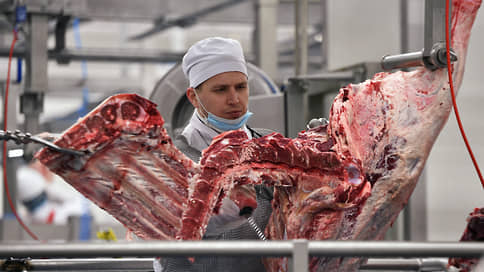The government will distribute the unclaimed volume of the tariff quota for the import of frozen beef into the Russian Federation
[ad_1]

The government will distribute the unclaimed volume of the tariff quota for the import of frozen beef into the Russian Federation by December 15. Let us remind you that within the quota the rate is 15%, outside it – 50%. As follows from Resolution No. 1812 of October 31, unclaimed volumes will be redistributed in an application manner – documents of those wishing to receive the benefit are accepted and reviewed by the Ministry of Economy. The need for “redistribution” of unselected quotas between importers may be explained by payment problems due to the Russian military operation in Ukraine.
The desire of the authorities to use the preferential mechanism to increase imports is understandable: beef production, which previously did not cover domestic needs, began to decline altogether in 2022 (see chart) – although beef imports were in 2017–2021, according to the Agroexport center under the Ministry of Agriculture , against the backdrop of production growth, showed negative dynamics. During this time, supply volumes decreased from 452.4 thousand tons to 287 thousand tons in physical terms and from $1.4 billion to just over $1 billion in money. The main suppliers remain Belarus, Paraguay, Argentina, Brazil and Uruguay.
To stabilize prices and provide raw materials to producers of canned goods and sausages, in 2022, the Eurasian Economic Commission (EEC) allowed the import of 200 thousand tons of beef to Russia at a zero rate. Let us remember that then, due to the appearance of cheap imported meat on the market, meat processing plants began to reduce purchase prices, which is why Russian farmers practically stopped selling livestock for slaughter for a while (for more details, see “Kommersant” dated June 27, 2022).
In 2023, the duty-free import quota was 100 thousand tons (see “Kommersant” dated September 23, 2022). It was assumed that such a volume of imports at a zero rate would, on the one hand, stabilize prices (without extending the measure, they were expected to increase by 15–20%), on the other, maintain the profitability and investment attractiveness of domestic production. It will be possible to assess the success of balancing market interests after summing up the results of the industry’s work in 2023. So far, there is no talk of a serious increase in domestic beef production: according to Rosstat, in the first half of 2023 its volume amounted to 1.1 million tons (in live weight), which is only 0.7% more than last year’s figure.
[ad_2]
Source link






